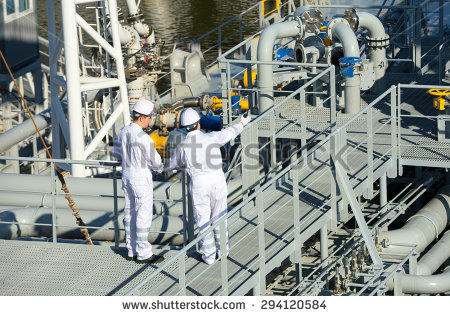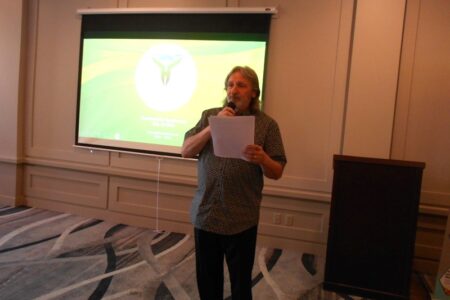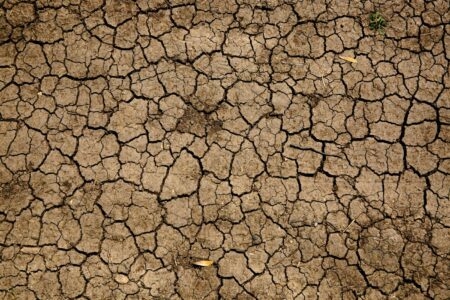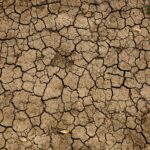Opinion: Questioning 'Progress' in the form of LNG Development
BC Premier Christy Clark famously denounced environmental activists as “the forces of NO,” and proudly aligned herself with “the forces of YES” for industrial development, and in particular, the Liquified Natural Gas (LNG) industry and the LNG projects her government is pushing — along with the Site C dam to provide power for it.
Are LNG projects a good thing for BC, or a bad thing in the long term? Will they produce many jobs and reduce global greenhouse gas emissions, as Clark claims? Or will they provide little long-term employment, despoil our life support systems and increase greenhouse gas emissions instead, as detractors claim? Opinions may matter little: approvals have been issued. The process has begun. Time will show us the truth, if we watch carefully.
Let’s examine several things about the LNG proposal for Squamish that Clark hasn’t publicized, and is unlikely to acknowledge.
The natural environment in the Squamish Valley:
Howe Sound’s watersheds provide an estimated $800 million to $4.7 billion in natural services to the region each year, according to a report released by the David Suzuki Foundation. The report, Sound Investment: Measuring the Return on Howe Sound’s Ecosystem Assets, shows an astounding trove of unrecognized — and undervalued — natural wealth in the Howe Sound region of B.C., comparable to industries such as mining and quarrying, which contributed $3.38 billion to B.C.’s industrial GDP in 2011.
The report estimates values for 11 of nature’s ecosystem services, including stabilizing climate, protecting communities from natural disasters and offering places for recreation and spending time in nature. The highest valued services were tourism and recreation (valued at a maximum of $304,000/hectare/year) and storm prevention (valued at a maximum of $84,000/hectare/year), a particularly important service in the face of climate change.
Many have noted the remarkable marine revival we’ve seen in the sound following decades of clean-up efforts to address the legacy of industrial pollution. The report found that the highest valued ecosystems are all near-shore environments (beaches, wetlands, and eelgrass beds). However, several industrial proposals, including a liquefied natural gas project, plan to site their operations on these near-shore ecosystems.
The LNG plant will be built on the contaminated site of the old Woodfibre plant; the company points out that it is a “brownfield” site, suitable only for industrial use — such as an LNG plant.
The report makes a compelling case that industrial resurgence and nature recovery in Howe Sound should be considered together, not in the current piecemeal approach that may be setting them on a collision course.
The ocean:
The once-through seawater cooling system originally proposed by Woodfibre LNG would suck up 17,000 tonnes of seawater from Howe Sound every hour, chlorinate it, heat it, and then dump it back into the sound. Despite assertions of safety from the proponent, and dismissal of concerns as “emotional,” some people fear the long-term effects on marine life, particularly salmon and herring. The proponent’s agreement with the Squamish Nation requires investigating other cooling methods.
But possibly Woodfibre LNG will be a less damaging industrial disaster than the LNG plant proposed for Lelu Island, near Prince Rupert — which would destroy an area of important eel-grass habitat used by juvenile salmon, for the Skeena River salmon runs.
The local community:
Woodfibre LNG is estimating 895 construction jobs over 2 years. These will be a mix of highly skilled and specialized jobs and the proponent admits most will be filled by workers from outside the community, depending on the expertise available in Squamish. Only 38.5 of these jobs are currently estimated to go to Squamish locals (See Table 6.2-8 of the Labour Market sectionof Woodfibre LNG’s environmental assessment application).
Studies during construction of similar industrial projects with large numbers of temporary construction workers show that:
- the number of workplace accidents increase.
- crime and substance abuse and misuse increase which leads to an increase in traffic accidents and collisions, as well as increased domestic violence.
- the additional demands on hospitals, counselling, police, and ambulance services results in reduced service capacity for residents.
Safety:
On February 15th, 2015, a 3.4 magnitude earthquake hit Vancouver’s coast that was felt throughout Howe Sound. The Woodfibre LNG proposal is located within this zone of moderate to high earthquake risk, on two known thrust faults. Source: B.C. Ministry of Energy and Mines
A seismologist from Natural Resources Canada has warned that “the big one” is just a matter of time. Do you think it is smart to site explosive Class A hazardous material on a site that has a history of landslides?
Fjords are frequently subject to landslides and debris flows and the Woodfibre site has a history of slope failure. In 1955 a wharf and three warehouses collapsed into Howe Sound at the Woodfibre site, causing $500,000 – $750,000 in damages (Bornhold, B.D., 1983, Fiords, GEOS, no. 1, p 1-4). Many feel that the Woodfibre site is not a safe location for an LNG facility.
A recent, but unreleased, geotechnical study by Knight Piesold supports this conclusion. The report identifies that approximately 46% of the study area was mapped as having rapid mass movement. This means landslides and slope slumpage, including existing natural landslide hazards as well as terrain where construction activity may increase landslide initiation.
Source: Section 5.6-16 Geotechnical and Natural Hazards of Woodfibre LNG’s environmental assessment application.
However, the proponent emphasizes that construction will be built to standards intended to withstand “a one-in-two-thousand-year” seismic event. Whether such an event will happen over the life of the project, and whether those standards would be adequate, remain to be seen.
Ship-to-ship transfers of LNG are especially dangerous in high winds as piping becomes inflexible at -162 degrees Celsius — the temperature to which natural gas must be cooled before it becomes liquid. The Society of International Gas Tankers and Terminal Operators (SIGTTO) and most ports prohibit these transfers in wind speeds/gusts over 25 knots, which is the average afternoon summer wind speed in Squamish.
The unique design of having a floating storage facility means that shore-to-ship transfers may also pose a problem for this proposal. But the proponent points out that it is a member of SIGTTO, and that the number of gas tankers going in and out will be only 40 per year.
Health Concerns
Air pollution from Woodfibre LNG will impact public health which costs taxpayers money.
Even though Woodfibre LNG is using hydro as the main power source, there will still be significant air pollution during operation. Woodfibre LNG is estimating air pollution emissions of 295.7 tonnes of nitrous oxides (NOx) and 43.8 tonnes of sulfur dioxide (SO2) every year (See Table 5.2-14 of the Air Quality Section of Woodfibre LNG’s environmental assessment application).
Emissions of NOx and SO2 interact with other compounds to form fine particles, which can affect both the lungs and the heart. Exposure to these particles is linked to increased risk of respiratory symptoms, such as irritation of the airways, coughing, or difficulty breathing; decreased lung function; aggravated asthma; onset of chronic bronchitis; irregular heartbeat; nonfatal heart attacks; and premature death in people with heart or lung disease.
The costs of air pollution:
A new study published in the scientific journal, Climatic Change, estimates the true social costs of air pollution that aren’t accounted for in the cost of fossil fuels and other pollutants. Social costs include the health impacts of air pollution as well as impacts from climate change. The study found that sulfur dioxide costs $42,000 per tonne, and nitrous oxides cost $67,000 per tonne.
Woodfibre LNG is estimating air pollution emissions of 295.7 tonnes of nitrous oxides (NOx) and 43.8 tonnes of sulfur dioxide (SO2) every year (See Table 5.2-14 of the Air Quality Section of Woodfibre LNG’s environmental assessment application). Combined, that is a social cost of over $20 million every year.
“This research shows that we need to transition away from fossil fuels not just to mitigate the risks associated with climate change, but to reduce the economic and health impacts of air pollution in general.”
For more information, check out this easy-to-understand article in The Guardian about the study.
SOURCE: Shindell 2015, The social costs of atmospheric release. Climatic Change.
Jobs:
According to a report by CRED, the province’s biggest employers are:
- Construction (205,000 jobs)
- Manufacturing (164,000 jobs)
- Tourism (127,000 jobs)
- Real estate and property development (121,000 jobs)
- High tech sector (84,000 jobs)
- Film sector (36,000 jobs)
In comparison, the mining, oil and gas sectors employ just 1% of BC’s workforce (25,000 jobs), but these sectors threaten jobs in several other sectors, particularly in tourism.
LNG plants need a lot of electricity, and they’re not paying their fair share. Everyday British Columbians will be subsidizing the cost of Site C dam which is only being built for these industrial users, and our BC Hydro bills are set to increase 30-40% over the next three years.
SOURCE: Interview with former BC Hydro CEO Marc Eliesen
How natural gas is extracted is another issue. In BC, much of it comes from fracking in the north-eastern part of the province. Fracking is a contentious technology, now known to cause earthquakes, and there have been numerous reports of groundwater contamination from fracking; just look up Jessica Ernst of Alberta, and her struggle to obtrain redress for groundwater ruined by nearby fracking operations.
Climate change and its effects are much in the news now, and although LNG may well be “an important transition fuel” — away from much dirtier-burning coal — it is still a fossil fuel, we still extract it at considerable environmental expense, and it still contributes to climate change.
When we consider these matters, perhaps the “forces of NO” have more compelling facts to back up their position than our pro-LNG development Premier does.
























